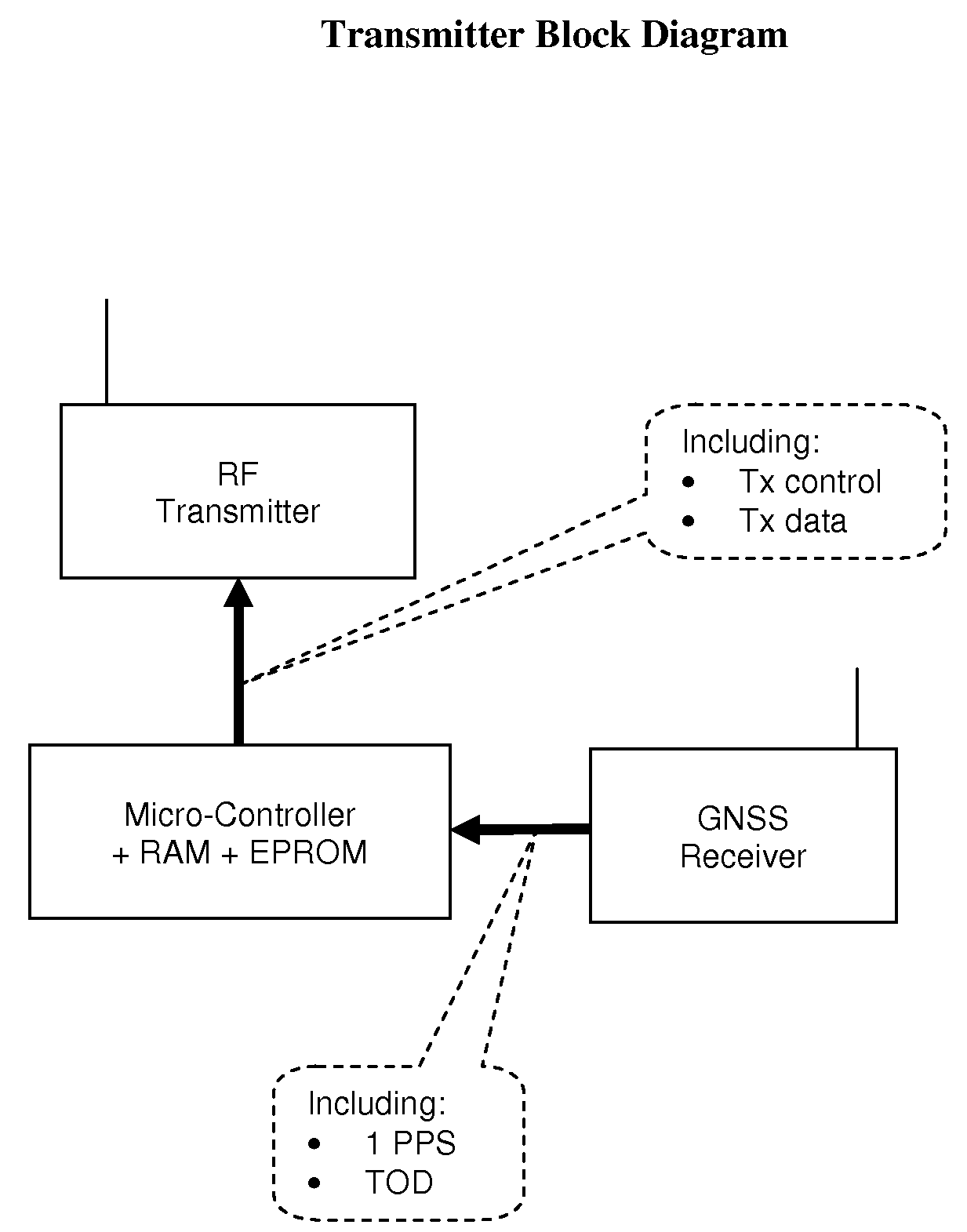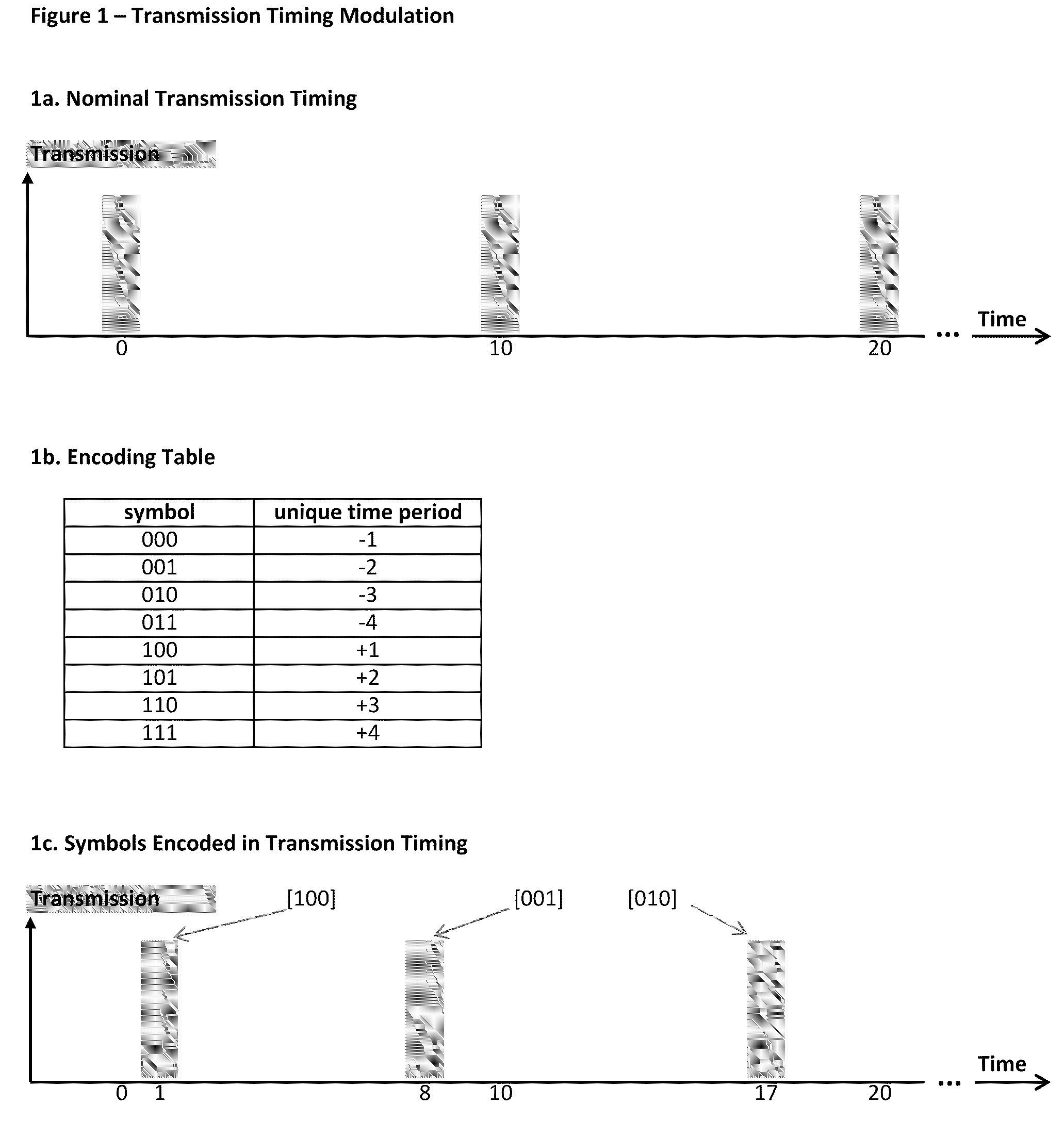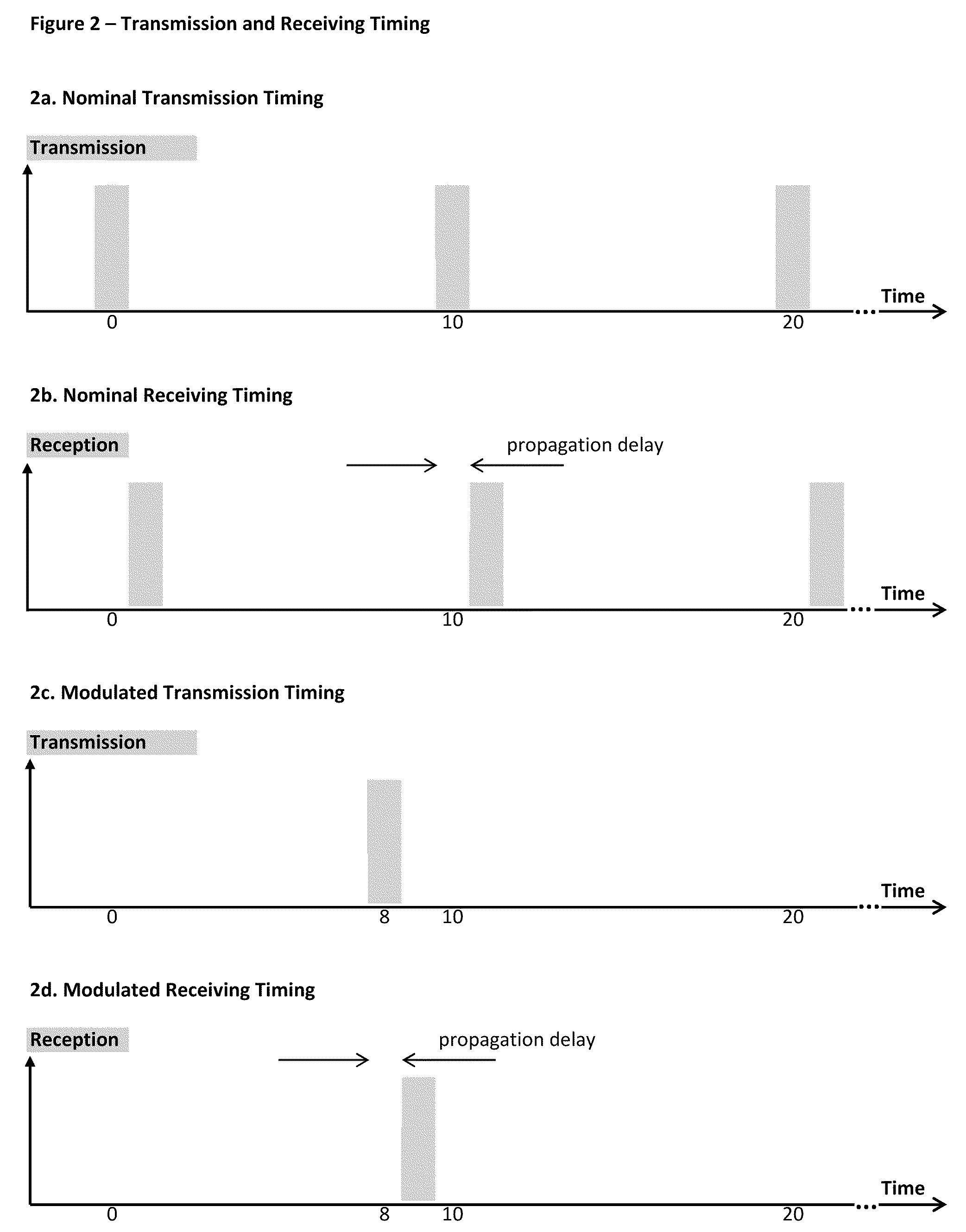Modulating transmission timing for data communications
a technology of data communication and transmission timing, applied in the field of digital communication, can solve the problems of replacing less efficient modulation methods, and achieve the effects of simple modification, increased throughput, and increased telemetry
- Summary
- Abstract
- Description
- Claims
- Application Information
AI Technical Summary
Benefits of technology
Problems solved by technology
Method used
Image
Examples
first embodiment
[0059]Microprocessors are also very known products in the art, as a skilled person probably appreciates. the invention relates to a microcontroller from the MSP430 family, provided by Texas Instruments (TI). For reference, one may look at—http: / / focus.ti.com / mcu / docs / mcuprodoverview.tsp?sectionId=95&tabId=140&familyId=342
[0060]Then, according to this first embodiment, the microprocessor activates the transmitter every 10 seconds, exactly at the 1 PPS transition associated with the TOD indicating that the least significant number of seconds is changing from 9 to 0 (from 9 to 10, from 19 to 20, from 59 to 0, etc.).
[0061]FIG. 7 depicts the Receiver Block Diagram, according to the first embodiment of the invention. As shown, the receiver comprises a microprocessor, which among other tasks is responsible to determine the receiving timing, coupled to a GNSS (GPS) receiver and to an RF receiver. According to this first embodiment, the microprocessor uses the 1 PPS and TOD information provi...
second embodiment
[0070]According to the invention, the nominal time interval between consecutive transmissions is set to 50 s, yet only 10% of this time interval is used for time modulation. Then, the unique periods of time used for the modulation are set between minus half of this percentage of time interval, i.e. −2.5 s, to plus half of this percentage of time interval, i.e. +2.5 s. Subsequently, the difference between close values of unique time periods in the encoding table is set substantially equal to 50 s×10%=5 s, divided by the number of symbols in the encoding table.
[0071]The second embodiment of the invention is related to the Cospas-Sarsat SAR satellite system. This embodiment is intended to comply with the Cospas-Sarsat requirements yet also improve the system performance. So a nominal transmission timing of one transmission every 50 seconds is according to Cospas-Sarsat requirements, as well as the transmission timing accepted change between −2.5 s to +2.5 s. Using a GPS receiver at the...
third embodiment
[0083]According to this aspect of the invention, the relative time modulation is used along with the Greenwich Time Signal (GTS), popularly known as the pips. The GTS is a series of six short tones broadcast by many BBC radio stations at the end of each hour to mark the precise start of the following hour. It normally comprises six pips in total, which occur on the 5 seconds leading up to the hour and on the hour itself. Each pip is a 1 kHz tone which, for the five leading pips, lasts a tenth of a second, while the final pip lasts half a second. The hour changes at the very beginning of the last long pip. The time interval between the beginnings of successive pips is normally 1 second. Then, according to the present invention, one bit of information is modulated on this GTS timing, to indicate a tsunami alert. Accordingly, if no tsunami is forecast, the GTS is kept as normal; yet, to alert for a possible near tsunami, the 3rd pip of the GTS is broadcast 0.5 seconds after the 2nd pip...
PUM
 Login to View More
Login to View More Abstract
Description
Claims
Application Information
 Login to View More
Login to View More - R&D
- Intellectual Property
- Life Sciences
- Materials
- Tech Scout
- Unparalleled Data Quality
- Higher Quality Content
- 60% Fewer Hallucinations
Browse by: Latest US Patents, China's latest patents, Technical Efficacy Thesaurus, Application Domain, Technology Topic, Popular Technical Reports.
© 2025 PatSnap. All rights reserved.Legal|Privacy policy|Modern Slavery Act Transparency Statement|Sitemap|About US| Contact US: help@patsnap.com



